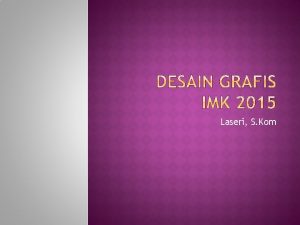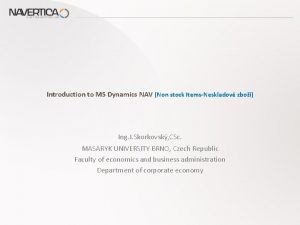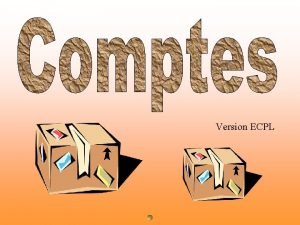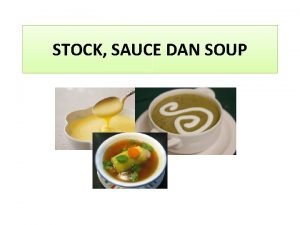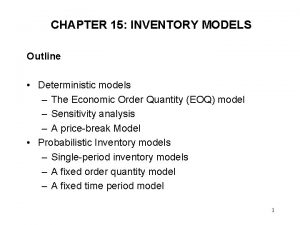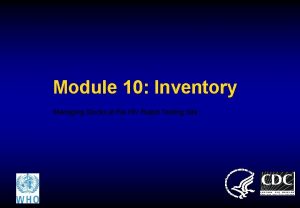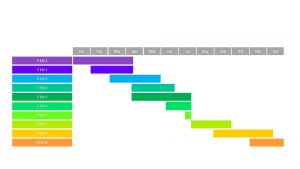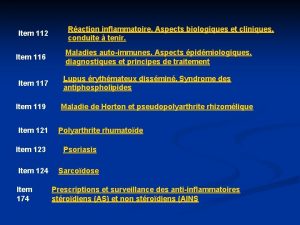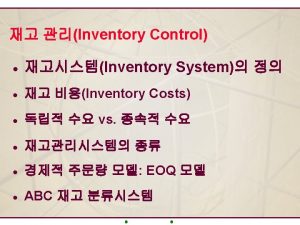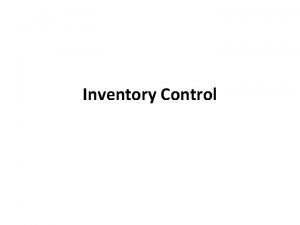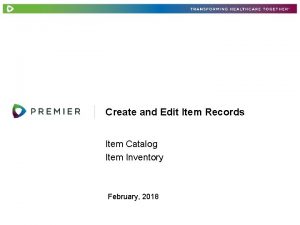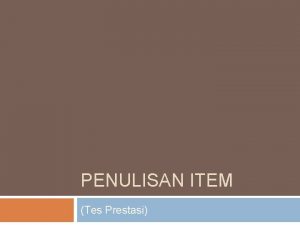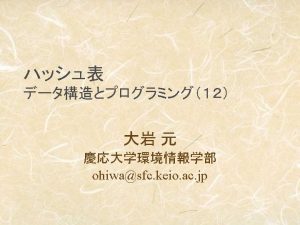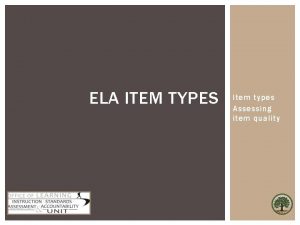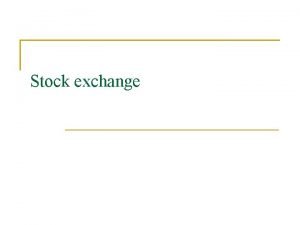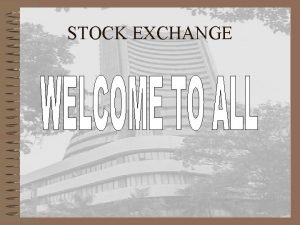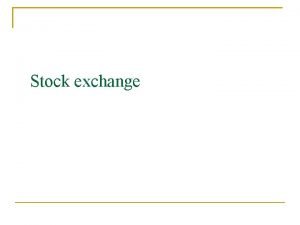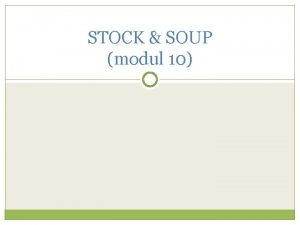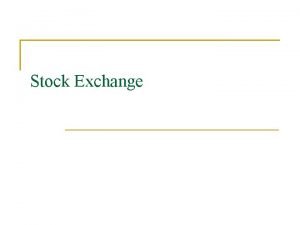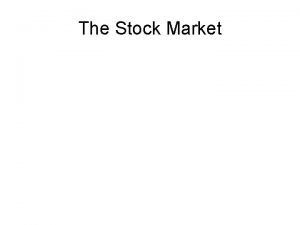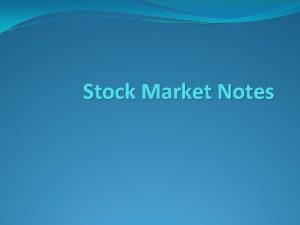INVENTORY Inventory is the stock of any item





















- Slides: 21


INVENTORY • Inventory is the stock of any item or resource used in an organization and can include: raw materials, finished products, component parts, supplies-intransit and work-in-process. • An inventory system is the set of policies and controls that monitor levels of inventory and determines what levels should be maintained, when stock should be replenished, and how large orders should be

WHY INVENTORY 1. To maintain independence of operations 2. To meet variation in product demand, production rate and lead time 3. To allow flexibility in production scheduling 4. To provide a safeguard for variation in raw material delivery time 5. To take advantage of economic purchase-order size 6. Disruptions

POSITIVE ASPECTS • Decouple operations • Avoid disruptions • Reduces no of ordering / set up • Hedge against inflation • Meet unexpected demands • Quantity discounts

NEGATIVE ASPECTS • • Quality of product service bundle Hide operational problems High cost Obsolescence Damage during storage Cost of tracking New product / technology introduction

STOCK POINTS

Independent vs. Dependent Demand Independent Demand (Demand for the final endproduct or demand not related to other items) Finished product E(1) Component parts Dependent Demand (Derived demand items for component parts, subassemblies, raw materials, etc)

Inventory Systems • Single-Period Inventory Model – One time purchasing decision (Example: vendor selling t-shirts at a football game) – Seeks to balance the costs of inventory overstock and under stock • Multi-Period Inventory Models – Fixed-Order Quantity Models • Event triggered (Example: running out of stock) – Fixed-Time Period Models • Time triggered (Example: Monthly sales call by sales representative)

INVENTORY CONTROL SYSTEM • When to order • How much to order • Buffer Stock • Maximum Inventory • How often to review stock

COSTS • Holding (or carrying) costs – Costs for storage, handling, insurance, etc • Setup (or production change) costs – Costs for arranging specific equipment setups, etc • Ordering costs – Costs of someone placing an order, transportation etc • Shortage costs

SINGLE PERIOD

Single-Period Inventory Model

Single Period Model Example • Our college basketball team is playing in a tournament game this weekend. Based on our past experience we sell on average 2, 400 shirts with a standard deviation of 350. We make Rs 100 on every shirt we sell at the game, but lose Rs 50 on every shirt not sold. How many shirts should we make for the game? Cu = Rs 100 and Co = Rs 50; P ≤ 100 / (100 + 50) =. 667 Z. 667 =. 432 (use NORMSINV(. 667)) therefore we need 2, 400 +. 432(350) = 2, 551 shirts

UNCERTAIN DEMAND

Fixed-Order Quantity Model Assumptions • Demand for the product is constant and uniform throughout the period • Lead time (time from ordering to receipt) is constant • Price per unit of product is constant • Instantaneous replacement

FIXED ORDER QUANTITY

Fixed-Order Quantity Model Assumptions • Inventory holding cost is based on average inventory • Ordering or setup costs are constant • All demands for the product will be satisfied (No back orders are allowed)

Cost Minimization Total Cost C O S T Holding Costs Annual Cost of Items (DC) Ordering Costs QOPT Order Quantity (Q)

TOTAL COST Total Annual = Cost Annual Purchase + Ordering + Holding Cost

PRICE DISCOUNT

Price-Break Example Problem A company has a chance to reduce their costs by placing larger quantity orders using the price-break order quantity schedule below. What should their optimal order quantity be if this company purchases this single inventory item with an ordering cost of Rs 4, a carrying cost rate of 2% of the inventory cost of the item, and an annual demand of 10, 000 units? Order Quantity(units) Price/unit(Rs) 0 to 2, 499 Rs 1. 20 2, 500 to 3, 999 1. 00 4, 000 or more. 98
 Item-item yang berkaitan ditampilkan bersama
Item-item yang berkaitan ditampilkan bersama Non stock item in navision
Non stock item in navision Any to any connectivity
Any to any connectivity Any question atau any questions
Any question atau any questions No, there aren’t.
No, there aren’t. Characteristics of common stock
Characteristics of common stock Stock initial
Stock initial Features of preferred stock
Features of preferred stock Bisque stock
Bisque stock Deterministic and probabilistic inventory models
Deterministic and probabilistic inventory models Is inventory a stock
Is inventory a stock Stock card inventory
Stock card inventory Sự nuôi và dạy con của hổ
Sự nuôi và dạy con của hổ đại từ thay thế
đại từ thay thế Quá trình desamine hóa có thể tạo ra
Quá trình desamine hóa có thể tạo ra Vẽ hình chiếu vuông góc của vật thể sau
Vẽ hình chiếu vuông góc của vật thể sau Cong thức tính động năng
Cong thức tính động năng Tỉ lệ cơ thể trẻ em
Tỉ lệ cơ thể trẻ em Thế nào là mạng điện lắp đặt kiểu nổi
Thế nào là mạng điện lắp đặt kiểu nổi Dạng đột biến một nhiễm là
Dạng đột biến một nhiễm là Lời thề hippocrates
Lời thề hippocrates Vẽ hình chiếu đứng bằng cạnh của vật thể
Vẽ hình chiếu đứng bằng cạnh của vật thể
